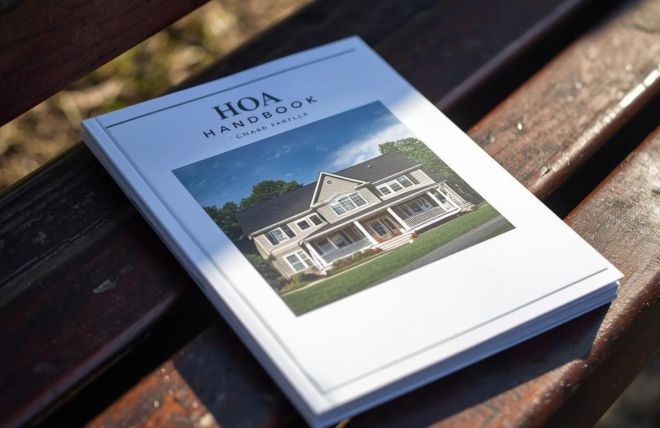Imagine trying to navigate a ship without a map or a destination. That’s what managing a community association without a strategic plan can feel like. Strategic planning serves as the map, providing direction and ensuring all efforts align with the community’s long-term goals. This comprehensive guide will delve into the basics of strategic planning for homeowners associations (HOAs), helping you understand its importance, the components involved, and how to develop and implement a successful strategic plan.
What is Strategic Planning?
Strategic planning is a systematic process through which an organization envisions its future and develops the necessary procedures and operations to achieve that future. For community associations, this means setting clear goals, identifying the resources needed, and outlining the steps required to enhance the community’s quality of life.
Strategic planning is crucial for several reasons. It ensures that the HOA's board is proactive rather than reactive, provides a clear sense of direction, helps in setting priorities, and ensures efficient use of resources. With a strategic plan, HOAs can better manage common areas, improve community engagement, and maintain property values, ultimately fostering a more cohesive and well-functioning community.
Key Components of a Strategic Plan
- Vision and Mission Statements: The vision statement describes what the community aspires to become in the long term. It’s an inspirational statement that reflects the community's values and dreams. For example, “To be a vibrant, inclusive community where all residents enjoy a high quality of life.”The mission statement, on the other hand, defines the community’s purpose and primary objectives. It’s more focused on the present and provides a roadmap for achieving the vision. For instance, “To enhance the quality of life for our residents through effective governance, community engagement, and the maintenance of common areas.”

- SWOT Analysis: Conducting a SWOT analysis helps the HOA identify its internal strengths and weaknesses, as well as external opportunities and threats. This analysis provides a foundation for developing strategies that leverage strengths, mitigate weaknesses, capitalize on opportunities, and defend against threats.

- Strengths: What the HOA does well (e.g., strong financial health, active community participation).
- Weaknesses: Areas where the HOA can improve (e.g., outdated facilities, lack of communication).
- Opportunities: External factors the HOA can exploit for better outcomes (e.g., community grants, new technologies).
- Threats: External factors that could negatively impact the HOA (e.g., economic downturns, regulatory changes).
- Goals and Objectives: Goals are broad primary outcomes the HOA aims to achieve, while objectives are specific, measurable steps to achieve these goals. It’s important to have both short-term and long-term goals to provide a balanced approach.
- Short-term Goals: Immediate priorities like upgrading playground equipment or organizing a community event.
- Long-term Goals: Future aspirations such as developing new amenities or implementing sustainable practices.
- Action Plans: Action plans outline the specific strategies and tactics needed to achieve the goals and objectives. They include detailed steps, timelines, and responsibilities, ensuring that everyone knows what needs to be done and when.
- Strategies: Broad approaches to reach the goals (e.g., fundraising for new amenities).
- Tactics: Specific actions to implement the strategies (e.g., organizing a charity event to raise funds).
- Budgeting and Resource Allocation: Effective budgeting and resource allocation are critical to implementing the strategic plan. This involves estimating costs, setting financial priorities, and ensuring that funds are used efficiently to support the community’s goals.
The Strategic Planning Process
- Preparation: The first step in strategic planning is preparation. This involves engaging board members and community stakeholders, gathering data on the current state of the community, and understanding the residents' needs and expectations.
- Engagement: Involve a diverse group of stakeholders to ensure broad perspectives and buy-in.
- Data Collection: Use surveys, focus groups, and community meetings to gather input and understand the current landscape.
- Development: Development involves drafting the strategic plan based on the collected data and stakeholder input. This is usually done through a series of workshops and meetings where board members and stakeholders discuss and finalize the plan’s components.
- Workshops and Meetings: Collaborative sessions to draft and refine the vision, mission, goals, and action plans.
- Drafting the Plan: Create the initial version of the strategic plan based on these discussions.
- Approval and Adoption: Once the draft plan is ready, it needs to be reviewed and approved by the board and possibly the broader community.
- Review Process: Solicit feedback from board members and residents to ensure the plan is comprehensive and representative.
- Final Approval: Formal adoption of the strategic plan by the board, making it an official guiding document.
- Implementation: After approval, the next step is implementation. This involves communicating the plan to the community, initiating the action plans, and starting the work of achieving the set goals.
- Communication: Share the strategic plan with the community through meetings, newsletters, and the HOA’s website.
- Execution: Begin the work outlined in the action plans, ensuring all tasks are on track.
- Monitoring and Evaluation: Continuous monitoring and evaluation are essential to ensure the strategic plan remains on course and adapts to any changes in circumstances.
- Progress Tracking: Regularly review the status of action plans and measure progress against objectives.
- Adjustments: Make necessary changes to strategies and tactics to stay aligned with the overall goals.
Benefits of Strategic Planning for HOAs
Strategic planning offers numerous benefits for homeowners associations:
- Improved Governance: With clear goals and a roadmap, the board can make informed decisions that align with the community’s long-term vision.
- Enhanced Community Engagement: A well-communicated strategic plan fosters transparency and encourages residents to participate actively in community activities.
- Financial Stability: Strategic planning helps in better budgeting and resource management, ensuring the community’s financial health.
- Goal Achievement: A structured approach increases the likelihood of successfully achieving the community’s goals and enhancing residents' quality of life.
Common Challenges and How to Overcome Them
Despite its benefits, strategic planning can face several challenges:
- Lack of Participation: Encourage broad involvement by using multiple communication channels and making the process inclusive.
- Resource Constraints: Prioritize goals and allocate resources effectively to ensure critical projects are funded and executed.
- Resistance to Change: Manage change by clearly communicating the benefits of the strategic plan and addressing concerns through open dialogue.
Conclusion
Strategic planning is not just a one-time activity but an ongoing process that helps community associations navigate the complexities of managing a residential community. By setting clear goals, involving stakeholders, and continuously monitoring progress, HOAs can create vibrant, well-managed communities where residents enjoy a high quality of life.
Sources:
- Athens-Clarke County Unified Government. (n.d.). Starting a neighborhood association guide. https://www.accgov.com/DocumentCenter/View/314/Starting-a-Neighborhood-Association-Guide
- Associa. (2020, August 18). How to create a strategic plan for your community in 5 steps. https://hub.associaonline.com/blog/how-to-create-a-strategic-plan-for-your-community-in-5-steps
- Clark Simson Miller. (n.d.). Budget for a community association: What to consider. https://clarksimsonmiller.com/budget-for-a-community-association-what-to-consider/
- Cedar Management Group. (n.d.). How to plan an HOA community event. https://www.cedarmanagementgroup.com/how-to-plan-an-hoa-community-event/
- American Planning Association, Florida Chapter. (n.d.). Florida Chapter of the American Planning Association. https://florida.planning.org







